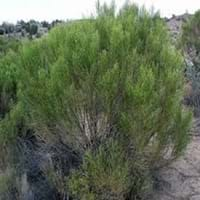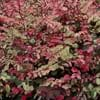Life Span
Perennial
Annual
Origin
Hybrid origin, Southwestern United States
South Africa
Types
Not Available
Shasta Daisy
Gloriosa Daisies
Painted Daisy
Pyrethrum Daisies
Number of Varieties
Not Available
Habitat
riparian zones, Semi desert, Upland
gardens, Grassland
USDA Hardiness Zone
8-10
10-11
Sunset Zone
7, 8, 9, 10, 11, 12, 13, 14
8, 9, 12, 13, 14, 15, 16, 17, 18, 19, 20, 21, 22, 23, 24
Habit
Spreading
Clump-Forming
Flower Color
White
White, Yellow, Blue, Purple, Orange, Pink, Magenta
Flower Color Modifier
Not Available
Bicolor
Fruit Color
creamy white
Not Available
Leaf Color in Spring
Green
Green, Blue Green
Leaf Color in Summer
Green
Green, Blue Green
Leaf Color in Fall
Green
Green, Blue Green
Leaf Color in Winter
Green
Light Green
Leaf Shape
Oblanceolate , Ovate
Arrowhead
Plant Season
Spring, Summer, Fall, Winter
Spring, Summer, Fall
Sunlight
Full Sun
Full Sun
Type of Soil
Clay, Loam, Sand
Loam
The pH of Soil
Acidic, Neutral, Alkaline
Neutral
Soil Drainage
Well drained
Well drained
Bloom Time
Spring
Late Spring, Early Summer, Summer, Late Summer, Early Fall, Fall
Tolerances
Drought, Dry soil, Heat Tolerance
Drought
Where to Plant?
Ground, Pot
Ground, Pot
How to Plant?
Seedlings
Seedlings, Stem Planting
Plant Maintenance
Medium
Medium
Watering Requirements
Needs very little water
Allow soil to be completely dry in between waterings, It cannot sustain wet-feet, Keep the ground moist but not water-logged, Water in morning to avoid prompting diseases, Water twice a day in the initial period
In Summer
Lots of watering
Lots of watering
In Spring
Moderate
Moderate
In Winter
Average Water
Average Water
Soil pH
Acidic, Neutral, Alkaline
Neutral
Soil Type
Clay, Loam, Sand
Loam
Soil Drainage Capacity
Well drained
Well drained
Sun Exposure
Full Sun
Full Sun
Pruning
Cut back old stems to the ground, Remove damaged leaves, Remove dead branches, Remove dead leaves
Cut or pinch the stems, Prune regularly, Remove deadheads
Fertilizers
can go long without fertilizers
All-Purpose Liquid Fertilizer
Pests and Diseases
Pests and diseases free
Red blotch
Plant Tolerance
Dry Conditions, Dry soil, Heat And Humidity
Drought
Flower Petal Number
Single
Single
Foliage Texture
Fine
Medium
Foliage Sheen
Glossy
Not Available
Attracts
Butterflies
Bees, Butterflies
Allergy
Unknown
Not Available
Aesthetic Uses
along a porch, deck or patio, Beautification, Ground Cover, Showy Purposes, Wild gardens
Beautification, Bouquets, Showy Purposes
Beauty Benefits
Not Available
Not Available
Edible Uses
Sometimes
Yes
Environmental Uses
Air purification
Air purification
Medicinal Uses
anti-inflammatory, Anti-oxidant, cholesterol-lowering
Cold, Cough, Stomach pain
Part of Plant Used
Twigs
Flowers
Other Uses
Can be made into a herbal tea
Showy Purposes, Used as Ornamental plant
Used As Indoor Plant
No
Yes
Used As Outdoor Plant
Yes
Yes
Garden Design
Groundcover
Bedding Plant, Container, Cutflower, Foundation, Groundcover, Hanging Basket, Mixed Border, Rock Garden, Wall
Botanical Name
BACCHARIS 'Centennial'
OSTEOSPERMUM
Common Name
desert broom , broom baccharis , greasewood
African daisy or Blue-eyed Daisy
In Hindi
desert broom
अफ्रीकी डेज़ी
In German
Wüste Besen
African Daisy
In French
desert broom
marguerite africaine
In Spanish
escoba del desierto
margarita africana
In Greek
desert broom
Αφρικανική μαργαρίτα
In Portuguese
vassoura do deserto
africano margarida
In Polish
desert broom
Gerbery
In Latin
desert broom
African primula
Phylum
Magnoliophyta
Anthophyta
Class
Magnoliopsida
Magnoliopsida
Order
Asterales
Asterales
Family
Asteraceae
Asteraceae
Genus
Baccharis
Osteospermum
Clade
Angiosperms, Asterids, Eudicots
Angiosperms, Asterids, Eudicots
Tribe
Astereae
Calenduleae
Subfamily
Not Available
Asteroideae
Number of Species
Not Available
Not Available
Importance of Desert Broom and African Daisy
Want to have the most appropriate plant for your garden? You might want to know the importance of Desert Broom and African Daisy. Basically, these two plants vary in many aspects. Compare Desert Broom and African Daisy as they differ in many characteristics such as their life, care, benefits, facts, etc. Every gardener must at least have the slightest clue about the plants he wants to plant in his garden. Compare their benefits, which differ in many ways like facts and uses. The medicinal use of Desert Broom is anti-inflammatory, Anti-oxidant and cholesterol-lowering whereas of African Daisy is Cold, Cough and Stomach pain. Desert Broom has beauty benefits as follows: Not Available while African Daisy has beauty benefits as follows: Not Available.
Compare Facts of Desert Broom vs African Daisy
How to choose the best garden plant for your garden depending upon its facts? Here garden plant comparison will help you to solve this query. Compare the facts of Desert Broom vs African Daisy and know which one to choose. As garden plants have benefits and other uses, allergy is also a major drawback of plants for some people. Allergic reactions of Desert Broom are Unknown whereas of African Daisy have Not Available respectively. Having a fruit bearing plant in your garden can be a plus point of your garden. Desert Broom has no showy fruits and African Daisy has no showy fruits. Also Desert Broom is not flowering and African Daisy is flowering. You can compare Desert Broom and African Daisy facts and facts of other plants too.





